The human being on this planet earth is in continuous evolution. When it comes to rugs and their history, Centuries ago people living in the tribes had a rug manufacturing practice by wowing the weeds and the long grasses to construct the oldest carpets that are only a primitive structure to keep the ground warm during colder days.
Coming forward over 5000 years back there are nomadic tribes who used the hides and skin of an animal to make the Ancient rugs. Nomadic people have made the rugs by using hand-weaving techniques by using the camel, sheep and goat hairs. In addition, Dynamic rugs were used in ancient gardens. Through the extensive research by archaeologists, it has been revealed that carpets were common back over 4000 years ago during Egyptian and Mesopotamian eras.
The words rugs and carpets are often pronounced as interchangeable terms. To make it somewhat more clear, rugs are the floor coverings that are not precisely bonded with the floor. These unfastened fabric pieces are used as a floor covering that does not occupy the floor completely.
The word rug is derived from the terminology “rugged’ ‘this term also defines the deeper and comparatively shaggier and more massive piles. On the other hand, carpet is the opposite of rugs, carpets meant to cover the entire floor. Mats are not placed directly, they are glued and stuck to the bottom.
When was carpet invented?
One of the oldest carpets, named as pazyryk carpet, existed in 500 BC. This carpet was found in Siberia in 1949. Even though it is old, the mat was designed with intricate and advanced designs, and the fibers are lovely, and colors are also great.
At that time, there was no professional carpet cleaning system, else pazyryk will be the best of the carpets even after the formation several thousand years ago. Sometimes a question asks where did rugs originated, and in answer, some people said from Turkey and Iran, but the accurate answer is different. The Rug originated in Armenia in the 7th century BC or earlier.
As far as the history of carpet and rug is concerned, it would be no wonder that this history is as old as the human being itself. It is in the instincts of humans to look for comfort and compliance. Human beings have always desired to have a Cosy atmosphere. No matter what it is about cavemen or modern human beings, nature is still the same. The men living in the caves have found out the rugs or the carpets to cover themselves and to have a warming effect in the colder days by using the fur of animals.
Despite these facts, humans of today have no such inherent needs because of the continuous revolution, but we are still inclined and motivated towards using the Ancient rugs in our homes. Usually, traditional rugs have an ancient appearance. Use of rugs as floor covers has been around since the evolution of humans. First of all, they were used to sleep to provide comfort and protected sleep. It was used because of the quality of providing warmth during the cold days. However, time passed, and by using the animal skin and all the related materials rug trade was started.
Rugs were the sources by which the people get enough to feed by selling them in different parts of the globe. Starting from the animal skins and hides nowadays, there is enough technology and advanced that now there is human made and synthetic materials by which rugs are constructed.
Are you still wondering about Persian rugs? Given below is the brief history of rugs that how they came into existence? What was the method of production? How were the rugs designed? How are the patterns impregnated?
Create a regal atmosphere in your home with Persian rugs. These rugs reflect the rich history and craftsmanship of the Persian tradition.
Rugs Symbols
In Rugs around the world, there are so many symbols and motifs, most of them centuries-old but still used in different rugs today. The Oriental rug symbols have some meaning. For instance, Anatolian mother goddess symbols, crescent shaped, commemorate a person, head ornament, cuff shaped motif, trousseau chest, pointed star, water container symbols are being used in Persian and oriental rugs.
The Persian rug symbols have an alluring appearance with full memories of old history—furthermore, Oriental rug residing in homes and hotels for a classic look.
History of Persian rugs
Persian carpets are a highly prized possession in Iran. Although generally rare, only 8 square meters and 9 square meter carpets are available. Iranian rugs have always been the benchmark of the craftsmanship of weaving, and hence the prices of Iranian rugs have always been higher than all other handmade carpets.

The carpet weaving is done manually, as opposed to automated machines which make bulk weaves. It takes a lot of expertise and skill in order to weave a carpet with even thickness, and the actual Persian rugs history lies in the fact that it has been passed on from one generation to another since the2500 years old history of Persians. The patterns and designs in the rug depict Persia’s rich culture and the ancient history of Persia. Persian rug origin is Iran, formerly known as Persia.
History of Zapotec Rugs
Teotitlan del Valle is usually regarded as one of the first villages established about 1465 by the Zapotecs. In Teotitlan del Valle, the background of this amazing rug starts.

The Teotitlan del Valle is a picturesque town with a long history, approximately 20 miles from the centre of Oaxaca. So Zapotec rugs originated from Teotitlan del Valle.
Aubusson carpets history
Rugs from Aubusson rank among the world’s best. These rugs were historically hand woven from wool; they emerged from France in the 15th century and now are often made from inexpensive synthetic machinery without losing consistency or longevity.

The older Aubusson carpets were made from wool. Today, they are created using synthetic materials that are cheaper to produce, but the quality is the same no matter which material they are made of. If you want the best quality carpets, then you should consider buying original pieces.
Egyptian rugs History
Egyptian rugs and artisans had an enormous variety of materials to work. The skilled artisans made rugs from animal skins to the pleasing linens that Egyptian pharaohs were accustomed to wearing.

The rugs varied in color from blue, red, gold to black and purple depending on the desires of the Pharaoh or King. One of the most well-known ancient Egyptian rugs is the “Meshkah” a square carpet of a dark green color that is also called the “Green Mesh.” The history of the “Meshkah” rugs dates back to about thirty-two thousand years ago.
Seventeenth-century Rugs (history of Oriental Rugs)
History of oriental rugs starts from seventeenth century rugs. Starting from the 17th and 18th centuries, oriental weavers rugs were made up of wool, and with time, some silk pieces were used as the prayer mats.
People at that time had no precise idea about weaving techniques, and they used the hair of camels and goats. After some time, people learned to weave the different materials and ended up using the grasses and other plant material for making the rugs.
Nineteenth 19th century Rugs
In US the first carpet making was done in 1971.however in the west up to the 19th century most famous, and standard floor covers are designed by using the flat woven fabrics. Because these are cost-friendly and most people could easily afford them. Oriental and hand woven rugs are costly. Demands for unique oriental rugs go on increasing and continued even in the 19th century. They suit well with the Italian and European furniture styles well.
The early 19th century was the high point of gorgeous Persian carpets. People loved their colorful rugs, which were often made with vivid and rich colors. The rich heritage of traditional rug artistry offers a perfect blend of classic aesthetics and contemporary sensibilities for the discerning homeowner.
At the time, there was a very large market in Europe for all these beautiful tapestries, and these beautiful rugs were made even more beautiful with the skill of the greatest artist to date.
Twentieth 20th century Rugs
At the beginning of the 20th century, the decoration trend got more straightforward and more accessible. During the beginning of this century, oriental rugs eventually got out of the movement. Oriental rugs were replaced by the machine-made mats that were mostly of single colors with simple overall patterns. Decoration becomes relatively more comfortable with available colors rather than bold, complex colors and patterns.
Eggplant and beige were considered to be the rug colour of the 20th century because they get merged with all the color schemes. By the 1950s carpets were designed and constructed by using the tufting machines, this trend was common in this era as compared to the handwoven techniques.
21st century Rugs
By reaching in the 21st century rugs became staple and got prevalence all-around greater than ever with the hardwood flooring. Nowadays they are only available in a variety of colors and sizes, but they also exist in different shapes and styles. These rugs fulfil all the needs of the consumers.
Large sized rugs can be used as the wall to wall carpets and wall draperies as well. Mats are designed in such a way that they can expose the corners and only settle in between the space. Area rugs are a medium-sized rug, and it is mainly used to create asymmetry in the room. Area rugs unify the overall location and are best for various activities. They exist in a variety of styles such as traditional, transitional and contemporary with a modern twist. They are available in a wide variety such as oval oblong, oval, rectangular and circular.
Accent rugs are relatively smaller than the area rugs. They are used to add the colors in the floor. They perform dual functions; they are functional as well as practical. One thing that is common in both rugs and carpets is that both get soil for walking purposes as well. Cleaning can be done at home as well as by the professional services. You must have a clear idea and knowledge about rug cleaning. This is a worthy investment.
Having exact know-how about the type of rug, place of origin, age, and fiber will save your time a lot. You can save a lot of time as well, and within a reasonable budget, you can get a better product. Rugs are delicate pieces and need much more care as compared to the carpet
Egyptian Rugs History
Egyptian rugs history starts from the fifteenth century, in 1517, after the conquest of ottoman, Egyptian rugs have certain importance in the world. There are no precise shreds of evidence about the rug-making era. Clothes and fragments of textiles have been found from almost all of the continents of Asia, dating back to thousands of years.
Most primitive Egyptian rugs have been believed to have originated from the orient. Around the world, Egypt is accredited for the formation of the first Egyptian rug that was around 3000 BC. Time passed, and the weaving method got improved, and gradually, designs and patterns became more intricate and well elaborated.
Pazyryk Rugs
Pazyryk was known to be the earliest rug. The evidence was found in the Siberian Tombs Back in 4000 BC. Piles are made up of the fabrics that are made up of the weaved and extensively knotted thread; these are the high rise surfaces under the rug.
Coming toward the 12th century A.D weaving of the pile rug was first observed in India and from its foundation over here it got viral around the all over the east.
In between the era of 1100-1200 A.D, some activists travelled through the Middle East and introduced the rugs in Europe.
European Era Rugs
Europe began to make the hand-knotted rugs at the beginning of the 13th century after this rug manufacturing industry got widespread because many people who entered in France are known for having several carpet manufacturing practices over here.
Rug manufacturing was a flourished business in Persia in the 14th and 15th centuries, and it was at the height of its glory during the Shah Abbas supremacy in the 16th century.
Isfahan
Isfahan central place in Persia was the hub of the rug industry that created the intricate pattern of rugs that are with fantastic color combinations and with deep weaved piles.
Coming towards the quality of the Persian rugs, Persian rugs that are of high and fine quality have almost 1000 knots per square inch. Persian and Turkish rugs were imported in the western countries during the 15th century. Pile rug manufacturing was started in England in the 1500s. As time passed during the time of supremacy of King Henry, some Persian people invaded Paris and left their original location. These weavers were so professional that they started working in the palace of Paris during the 1600s.
During the year 1628, a carpet factory originated in France. French people had a clear idea of weaving, and they began to make rugs in France with excellent pile quality and vibrant, beautiful colors. These rugs had a deep background that clearly defines the oriental touch. At the beginning of the year, 1700, England became the hub of rug and carpet manufacturing industries. And the English community developed the power looms around the year 1780.
Embroidered rugs were designed and crafted first in France and later on it was known for the best rugs in the town. Aubusson in France has become the trademark for all the rugs and carpet woven there.
This place is known for its best rugs. Brussels became a significant place for the manufacturing of such carpets in the 16th century, and by the 18th century it had become the central place for rug making
Revolution in weaving
With the advancement in technology, Wilton weave came into existence with better and advanced hand-knotting practice. In North America, braided rugs were the most commonly known rugs rag rugs and the other such kinds made up from the scraps of clothes.
IN US the first carpet making factory was developed in 1791 in Philadelphia. French weavers got trained with time, and they introduced the jacquard weaving in the 1800s.
Current era of rugs and onward
Rugs are now designed and constructed by using machines. Machine made rugs are relatively less expensive and can be afforded by most of the people. And made rugs are still important because of their artistic effects and their cultural importance. If you are thinking about redecorating your living space, one of the best options is to consider the timeless elegance of authentic Ancient garden rugs. A variety of styles are available in a large range of colors and weaves that will complement any home decor.
These area rugs are unique, and an interesting fact is that machine-made mats can never replace the real beauty of these rugs. Handmade rugs are still old in large amounts all around the world.
Define your living spaces with versatile area rugs. These rugs offer a perfect balance of form and function to enhance the visual appeal of any room in your home.
FAQS
When was carpet flooring invented?
The carpet was made from sheep wool and goat hair. They first appeared two or three thousand years before the birth of Jesus Christ. Carpets can have originated in the Middle East; however, the actual location is still a matter of discussion. The oldest carpet is called pazyryk carpet, which was invented in 1945 and its size is 6 feet 6 inches by 6 feet. The primary purpose of these early rugs was to make sitting on the floor comfier.
When was the carpet sweeper invented?
The carpet sweeper was invented by American Melville Bissell in 1876. Before carpet sweeper people removed the dirt and dust by hand with simple brooms, it sometimes became difficult. After the invention of carpet sweeper flooring, cleaning the carpet has been easy. Now, the carpet sweeper has been replaced by an electronic vacuum cleaner.
When did carpet become popular in homes?
In the 19th century, carpet became popular in homes, but it gained popularity during the postwar suburban construction boom.
When did shag carpet become popular?
The prevalence of shag carpet style fluctuated throughout the ages, and they peaked in the 1960s and 1970s. There was a time when it was all about exploring. A shag is any carpet or rug with very deep layers, with a distinct diagonal line down the middle, giving it the appearance of a shaggy rug.
It is generally used in the southwestern decorating style and comes in a variety of colors, making it great for accenting southwestern decor. Most shag rugs are made with an old-fashioned shag-carpet pile which gives them the characteristic look of shag.
What kind of rugs in Victorian-era history?
- Wool or sheepskin was costly floor materials. Runners known as “druggets” were used to cover valuable rugs.
- Oversized Antique Persian Tabriz Haji Jalili Carpet Antique Sultanabad Rug
- An Antique Arts and Crafts William Morris Rug
- Large Antique Indian Agra Rug
- Victorian Era Antique French Savonnerie Carpet
- Savonnerie Carpet
- Era Floral Persian Kerman Rug
- English Axminster Rug
Who invented Carpet?
Most people think about carpet in terms of its pros and cons, colors, styles, and materials available. We seldom stop to think about the history of carpet or where it came from. In 1949, a pile carpet rug found in a Siberian burial mound was discovered to be the oldest carpet ever found. However, in the carpet industry, William Sprague from Philadelphia established a carpet-making mill in 1791.
Difference between Carpet and Rug?
Choosing between rugs and carpets can be difficult. However, it is important to understand the difference between them. The most common difference between them is their size. Carpets are usually larger than area rugs. Carpets cover wall to wall flooring extending to cover the entire floor space. Also, carpets are used to stick with the floor with glue or floor tape. However, when it comes to rugs, they come in various shapes & sizes according to your decorating preferences.
What is a Persian Rug?
A Persian rug is also known as Iranian carpet. It is famous because of its heavy textile fabric. The Persian carpet culture is also popular for the depiction of a wide variety of utilitarian and symbolic purposes. Made up of natural fibers, these rugs are popular for their rich colors and interesting designs.
Conclusion
In this blog, the history of rugs has been explained from ancient to modern era. We have covered different eras such as, Seventeenth-century Rugs, Egyptian Rugs European Era and Nineteenth-century Rugs. Furthermore, give detail on the symbols of Persian and oriental weavers rugs. Well, rugs originated in 500 BC and still it is being used in homes and hotels. The history of carpet and rugs can be traced back to the Middle Ages when it was a popular floor covering during the time period known as the Renaissance.
You can get your favorite style and color of the rugs at the rug gallery Columbus. Rug gallery in Dublin has a wide range of ancient and modern rugs. You can see from the handwoven rugs to machine-made rugs at the rug store. This Rug store offers you excellent quality and cost-friendly rugs with a useful rug guide so that the piece you have selected for will be a life time investment.
Related Articles
Which Rug Size is Best for a Queen Size Bed?
How to Decide on the Size Of Area Rug For Your Bedroom? | Perfect Rug Size for King Bed

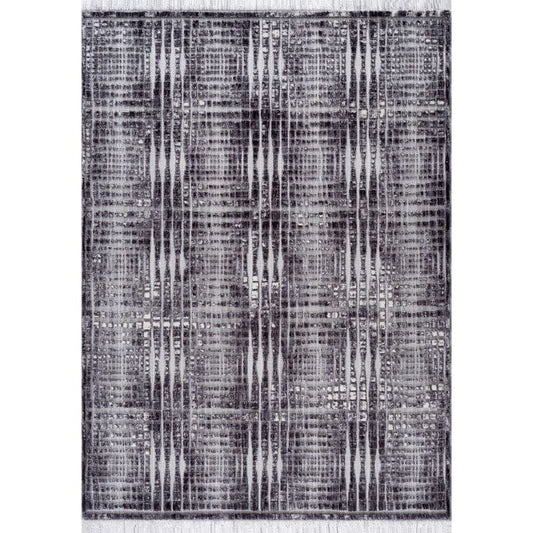
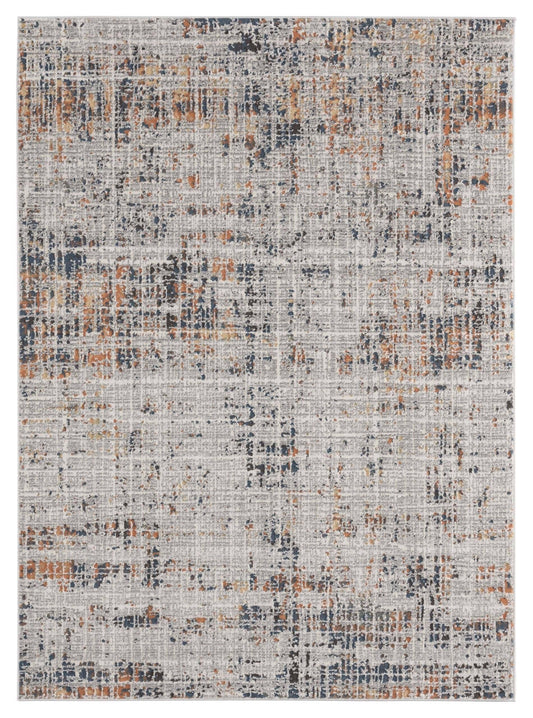
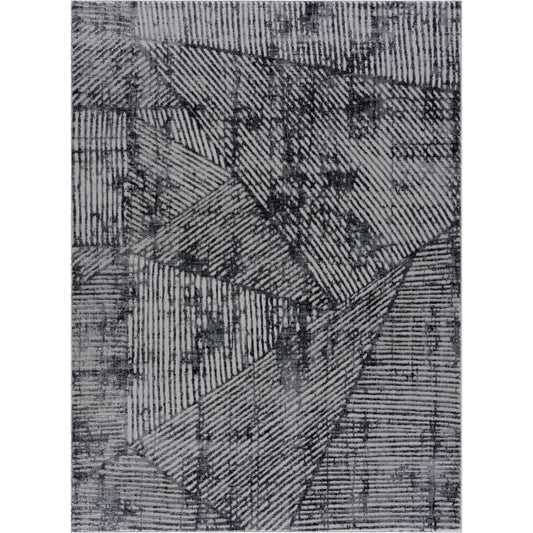
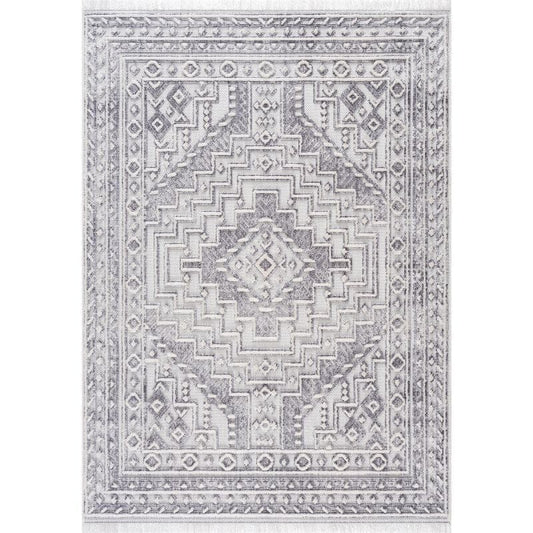
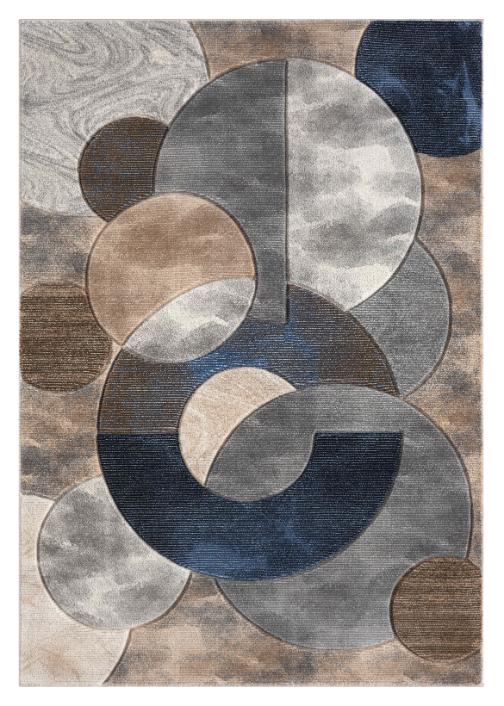

![Explore History of Persian & Oriental Rugs [Ancient to Modern]](http://ruggallery.net/cdn/shop/articles/History_of_rugs_1100x.png?v=1662637943)







